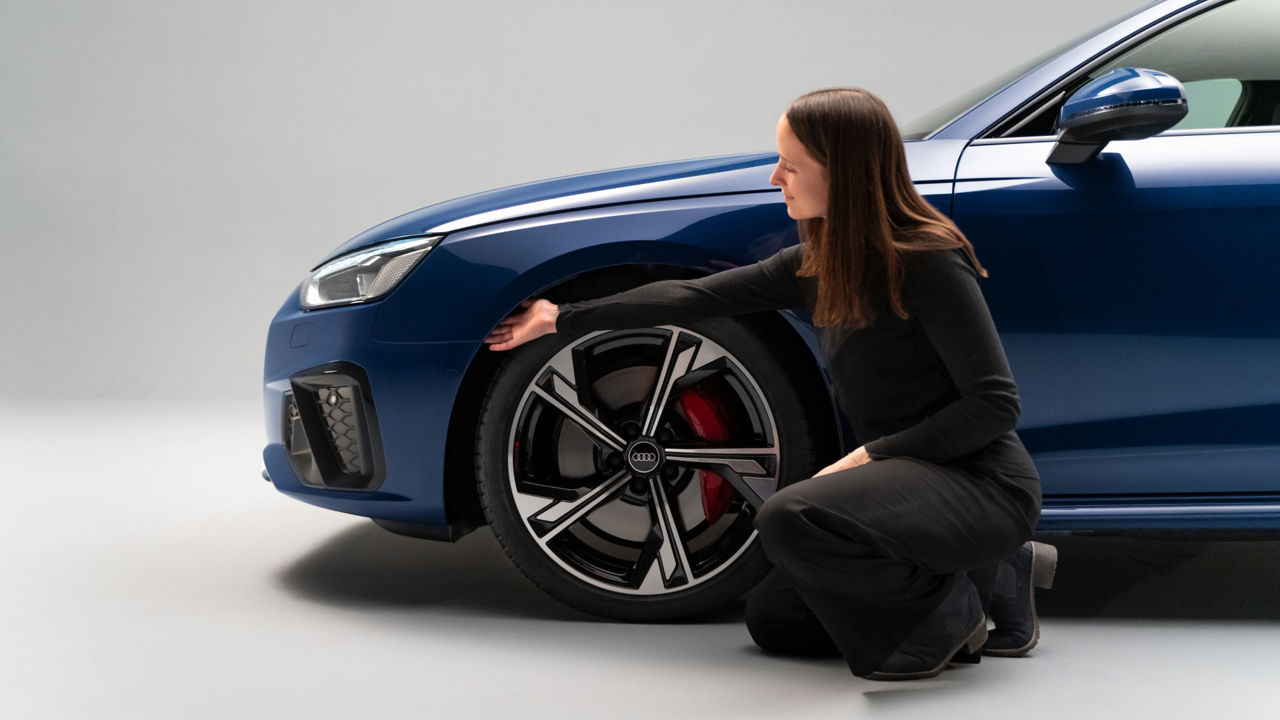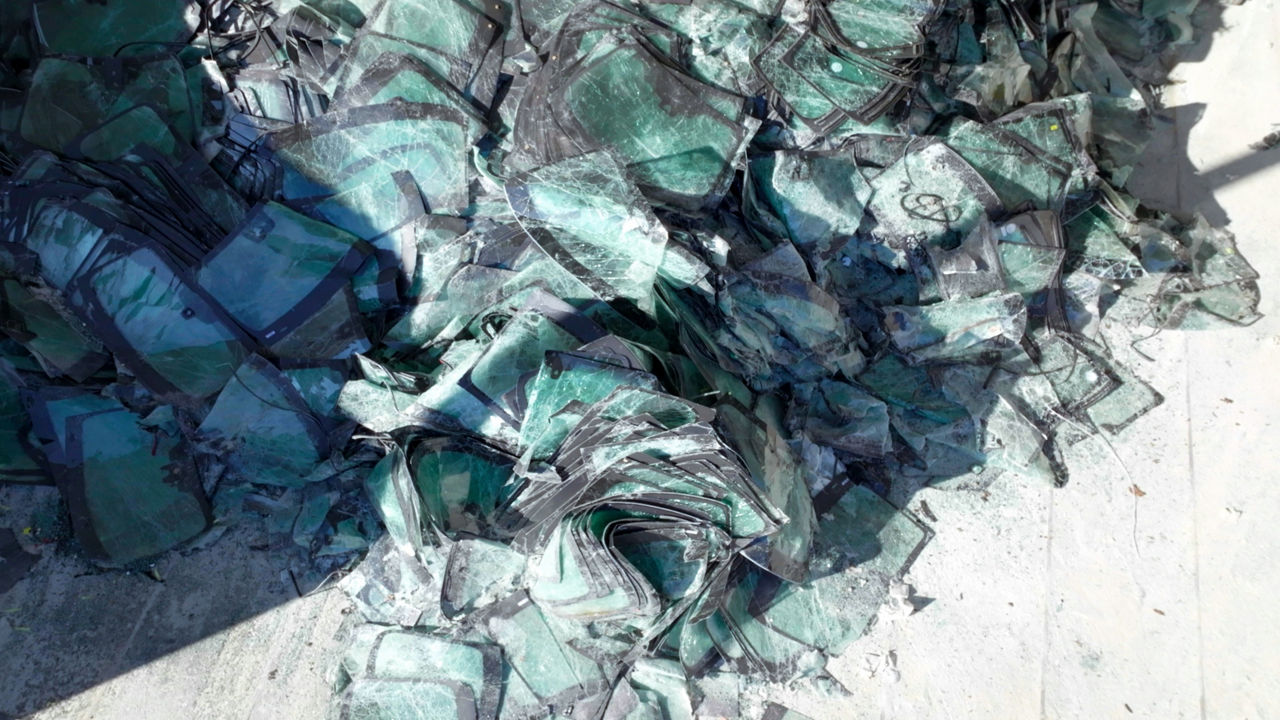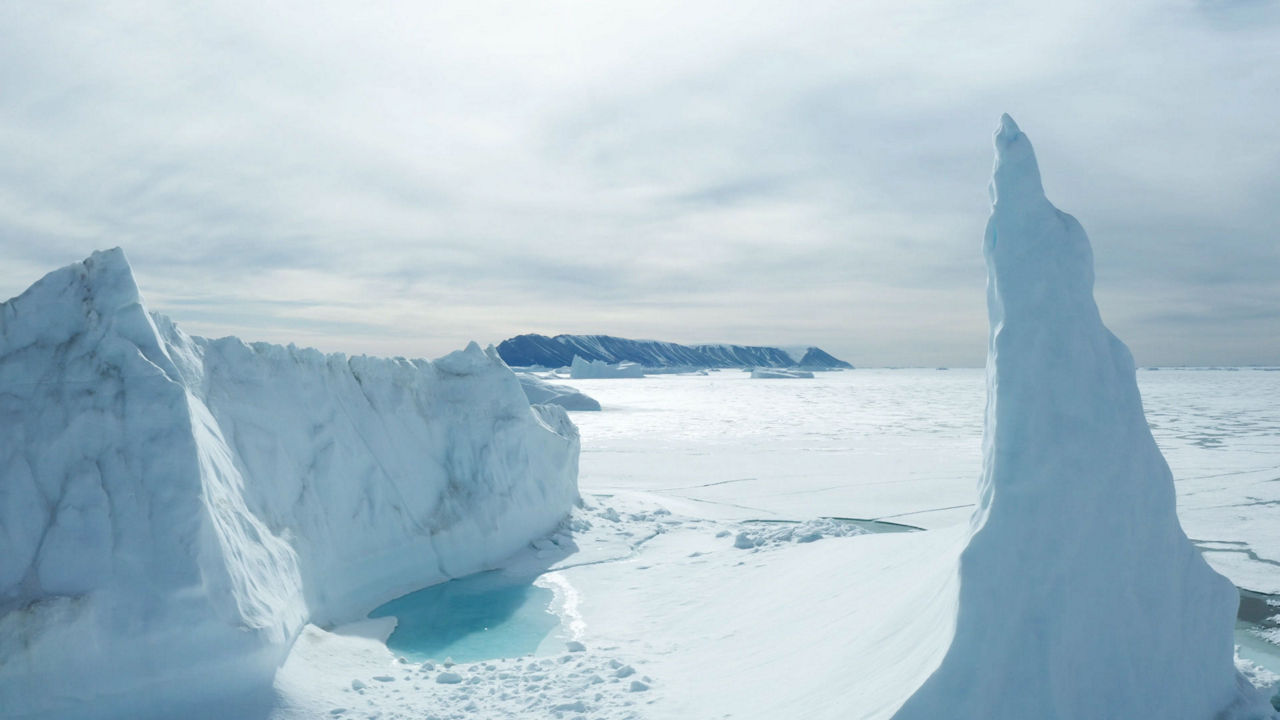
The ice landscape of Northern Greenland, located just a few hundred kilometers away from the North Pole, during an expedition led by Sebastian Copeland in the summer of 2023.
The ice landscape of Northern Greenland, located just a few hundred kilometers away from the North Pole, during an expedition led by Sebastian Copeland in the summer of 2023.
Sebastian Copeland is convinced that the two key drivers for our future are science and technology, which provide solutions. For over 25 years, the Englishman has been committed to climate protection. He is a polar explorer and climate analyst, having studied geology and glaciology, among other fields. However, Copeland is also an award-winning photographer and author. The Englishman crossed Greenland and Antarctica and reached the geographic North Pole – on foot. "And every time I return to these places, to the Arctic or Antarctic, I see the accompanying effects and impacts of human actions," he explains.
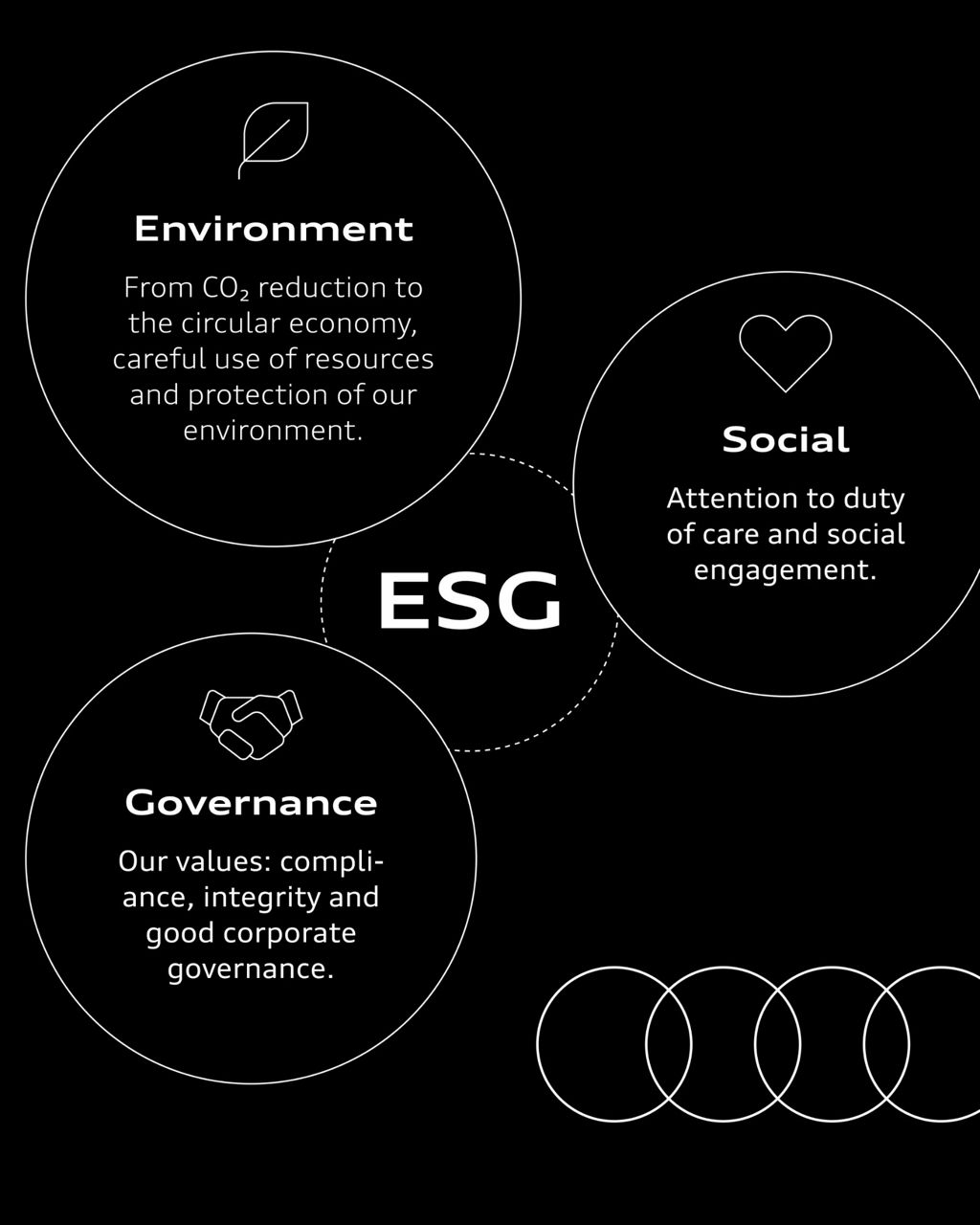
Climate protection, responsible use of resources, social progress, and social justice are among the major challenges of our time. Audi assumes economic, ecological, and social responsibility and makes sustainable business an integral part of all decisions and products.

Sebastian Copeland is an environmentalist, author, polar explorer, and photographer. "I love taking pictures of icebergs because they are constantly changing. They are born, they travel, they interact - and then they merge with the sea, giving life to the next cycle of icebergs. It's beautiful,“ he says.
Climate protection, responsible use of resources, social progress, and social justice are among the major challenges of our time. Audi assumes economic, ecological, and social responsibility and makes sustainable business an integral part of all decisions and products.
Sebastian Copeland is an environmentalist, author, polar explorer, and photographer. "I love taking pictures of icebergs because they are constantly changing. They are born, they travel, they interact - and then they merge with the sea, giving life to the next cycle of icebergs. It's beautiful,“ he says.
Sebastian Copeland has had a long-standing collaboration with Audi, which now continues in a nine-part series. In "The Bigger Picture: Sustainability @ AUDI AG", the researcher invites viewers to take a deep look into the inner workings of an automotive company like Audi. This special expedition takes him to various important Audi locations and allows him to meet with interdisciplinary Audi experts, with whom he discusses the crucial topics for ecological and social sustainability. "In this series on environment, social issues, and responsible corporate governance, or ESG, we will delve deeply into what could make a difference," summarizes Sebastian Copeland.
“In this series we will delve deeply into what could make a difference.
Sebastian Copeland
Customers wouldn’t see any difference. The components, Schoberer emphasises, would by no means be inferior in terms of quality – and yet they would become more and more sustainable. Various tests have been and are still being conducted on how to further sort the plastics and which recycling technologies can be used to upgrade them. “Material recycling always has top priority, as it requires the least energy,” says Schoberer. The plastic waste is first shredded. Then the granules are melted down, and finally a new shape is formed. This process requires so-called fractions that are as pure as possible. However, the necessary sorting of plastics has its technical limits. In order to still benefit from solutions for plastic waste, Jutta Schoberer is also working on physical and chemical recycling in addition to adapting the sorting process.
The path is becoming clearer: “We have already found first solutions to existing problems and continue to work on enabling the recycling and reuse of more plastics from end-of-life vehicles. Our tests and upcoming vehicle projects show that it is possible.” As is the wheel arch liner on the Audi A4 Avant.
Sebastian Copeland travels to various corporate locations of Audi and speaks with employees about electrification, circular economy, data protection, as well as human rights and social engagement - ESG criteria that shape Audi's actions.
Sebastian Copeland travels to various corporate locations of Audi and speaks with employees about electrification, circular economy, data protection, as well as human rights and social engagement - ESG criteria that shape Audi's actions.
Join Sebastian Copeland in "The Bigger Picture: Sustainability @ AUDI AG" in the coming days and weeks on a special expedition and discover how Audi lives up to the criteria for ecological and social sustainability as one of the central guiding principles of its corporate governance.
Roger Styss, Director Powertrain & Drivetrain Architecture at AUDI AG, demonstrates how the transition from combustion engines to electric drives, with technological and design breakthroughs by Audi, heralds the car of tomorrow. And how they redefine performance, style, and comfort.
Sebastian Copeland explores Audi Mission:Zero, the program that consolidates all measures and activities worldwide on environmental issues in all Audi production sites. It focuses on the major challenges of the century: decarbonization, climate change, water consumption, resource scarcity, and biodiversity.
Roger Styss, Director Powertrain & Drivetrain Architecture at AUDI AG, demonstrates how the transition from combustion engines to electric drives, with technological and design breakthroughs by Audi, heralds the car of tomorrow. And how they redefine performance, style, and comfort.
Sebastian Copeland explores Audi Mission:Zero, the program that consolidates all measures and activities worldwide on environmental issues in all Audi production sites. It focuses on the major challenges of the century: decarbonization, climate change, water consumption, resource scarcity, and biodiversity.
The Audi factory in Győr has been operating with a CO2-neutral balance since 2020. Sebastian Copeland is given a tour by Dr. András Torma, Project Manager Environmental Protection at Audi Site Győr, Audi Hungaria, to see the technological measures used to achieve this. These include photovoltaics for green energy, heat recovery, and a geothermal project.
At the Neckarsulm plant, Audi cools water from the welding robots in hybrid cooling towers on the plant roof and purifies waste water from the production processes. The aim is to close as many water cycles as possible in the plants in order to save as much water as possible in the vehicle production process. Andreas Kolleth, Project Manager Production Water, demonstrates the efforts.
The Audi factory in Győr has been operating with a CO2-neutral balance since 2020. Sebastian Copeland is given a tour by Dr. András Torma, Project Manager Environmental Protection at Audi Site Győr, Audi Hungaria, to see the technological measures used to achieve this. These include photovoltaics for green energy, heat recovery, and a geothermal project.
At the Neckarsulm plant, Audi cools water from the welding robots in hybrid cooling towers on the plant roof and purifies waste water from the production processes. The aim is to close as many water cycles as possible in the plants in order to save as much water as possible in the vehicle production process. Andreas Kolleth, Project Manager Production Water, demonstrates the efforts.
The Audi charging hubs are Audi's offer for premium fast charging in urban areas. Ewald Kreml, Strategic Project Lead Audi charging hub, explains what makes the Audi charging hubs such a special premium experience, how Audi customers benefit from the reservation function and what technology Audi uses for second-life battery storage.
Reducing and avoiding waste through recycling, through reuse in second-life initiatives, and through durable products: Theresa Lösch, Project Manager Product Strategy Circular Economy, shows Sebastian Copeland how Audi tries to close loops along the entire life cycle wherever possible using the three pillars reduce, reuse and recycle.
The Audi charging hubs are Audi's offer for premium fast charging in urban areas. Ewald Kreml, Strategic Project Lead Audi charging hub, explains what makes the Audi charging hubs such a special premium experience, how Audi customers benefit from the reservation function and what technology Audi uses for second-life battery storage.
Reducing and avoiding waste through recycling, through reuse in second-life initiatives, and through durable products: Theresa Lösch, Project Manager Product Strategy Circular Economy, shows Sebastian Copeland how Audi tries to close loops along the entire life cycle wherever possible using the three pillars reduce, reuse and recycle.
For Audi, embracing diversity in corporate social responsibility means bringing different perspectives into the company and valuing this diversity so that the company as a whole and all those who work there can benefit. Dr. Antonia Wadé and Dr. Carina Behrends, both Project Managers of Diversity & Inclusion at AUDI AG, provide insight into this approach.

Data protection, protecting the data of customers to the best of their ability and thus safeguarding their rights, is one of Audi's central principles. Dr. Christina Kissling and Christian Stöckl, Legal Counsel Privacy Risk Management at Audi, describe the customer expectations for data security in the context of connected cars and digital services.
For Audi, embracing diversity in corporate social responsibility means bringing different perspectives into the company and valuing this diversity so that the company as a whole and all those who work there can benefit. Dr. Antonia Wadé and Dr. Carina Behrends, both Project Managers of Diversity & Inclusion at AUDI AG, provide insight into this approach.
Data protection, protecting the data of customers to the best of their ability and thus safeguarding their rights, is one of Audi's central principles. Dr. Christina Kissling and Christian Stöckl, Legal Counsel Privacy Risk Management at Audi, describe the customer expectations for data security in the context of connected cars and digital services.
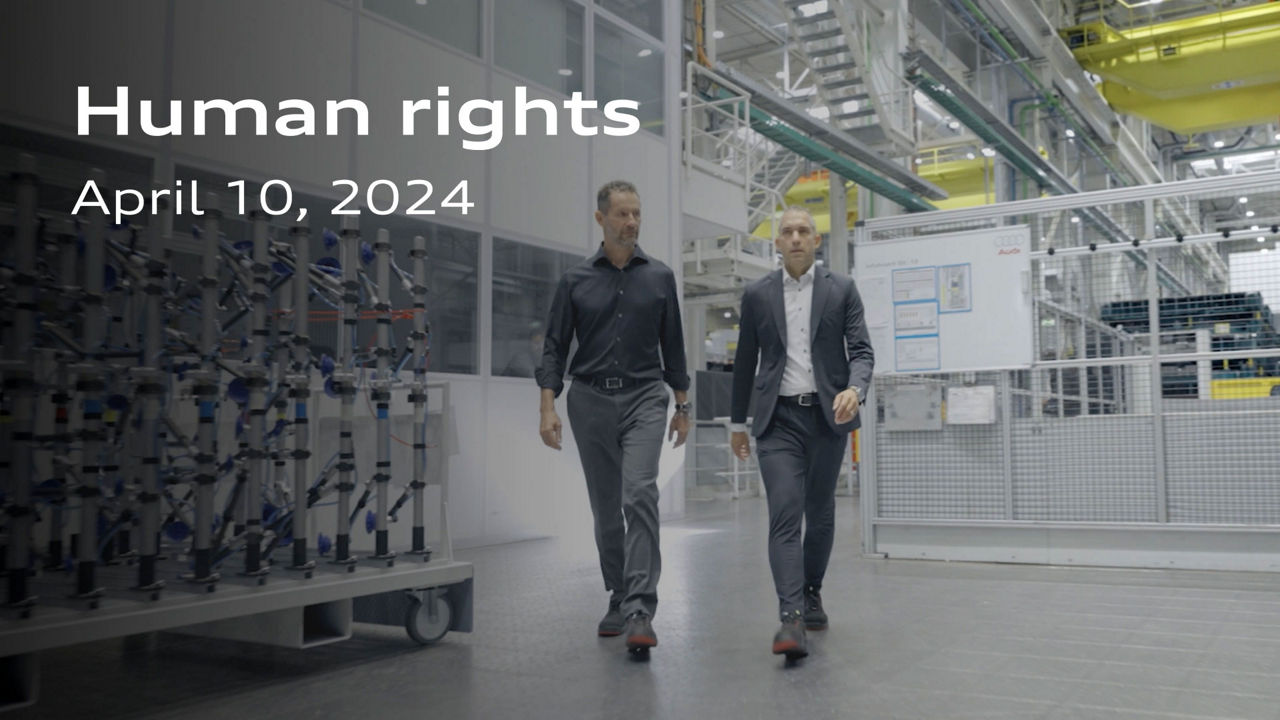
Audi is committed to raising awareness for human rights and their respect, while also respecting different cultures and its partner companies. Daniel Patnaik, Human Rights Officer of the Audi Group, explains to Sebastian Copeland how Audi ensures and verifies the compliance with human rights in its supply chain.
Audi is committed to raising awareness for human rights and their respect, while also respecting different cultures and its partner companies. Daniel Patnaik, Human Rights Officer of the Audi Group, explains to Sebastian Copeland how Audi ensures and verifies the compliance with human rights in its supply chain.

